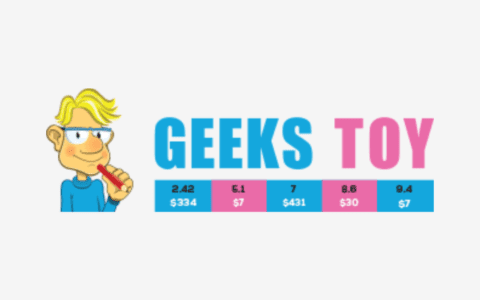Swing trading is a popular technique used in financial markets, and it can also be applied to trading on betting exchanges. In this article, I will delve into the concept of swing trading, its core principles, and how it can be applied to sports betting to achieve profitable results.
Article Contents
What is Swing Trading?
In finance, swing trading is a type of trading strategy that involves buying and selling assets over a short period to take advantage of market fluctuations. The goal is to capture the “swings” or price movements that occur in a market, rather than holding onto an asset for the long term. Swing traders use technical analysis to identify these swings and make decisions about when to enter and exit positions.
The betting exchange is similar to a financial market in that it allows users to buy and sell positions on various outcomes of a sporting event. As a result, the same principles of swing trading can be applied to the betting exchange.
For example, let’s say that you are betting on a football match, and you believe that the odds for one team to win are going to decrease. You could place a back bet on that team at the current odds of 10.0 and then sell (lay) that position later when the odds have decreased 7.0.
Similarly, if you believe that the odds for a team to win are going to increase, you could place a lay bet (betting against the team) at 8.0 and then buy back that position later at a higher price of 10.0. This would also result in a profit.
The key to successful swing trading on the betting exchange is to identify the swings correctly and make timely decisions about when to enter and exit the market. This requires a good understanding of the entities at play and a willingness to monitor the market closely.
Learn the basics of Backing & Laying
Why Do Odds Swing?
Betting odds can swing for a variety of reasons, including changes in public sentiment, liquidity, the volume of bets being placed, and momentum.
Market Sentiment
One of the primary drivers of odds movements is changes in market sentiment. As new information becomes available or as the betting public’s opinions change, the odds for different outcomes will shift to reflect these changes. For example, if a key player is injured in the lead up to a football match, the odds for that team to win may decrease as the perceived chance of winning has decreased.
Lack of Liquidity
In an illiquid market, there are fewer participants and fewer bets being placed, which can create price swings when relatively significant bets are placed on one side of the market.
For example, in a market with low liquidity, if a bettor places a sizable back bet on a particular outcome, there may not be enough opposing lay bets to match that amount. If the backer requests a competitive price, this can cause the current spread (difference between back and lay odds) to close significantly.
Volumes
The volume of bets being placed on different outcomes can also have a significant impact on odds movements.
The odds on the exchange are determined by the amount of money that is being matched on each side of the market. If there is a lot of money being bet on one outcome, the odds for that outcome will decrease as there is more demand for that position. Conversely, if there is less money being bet on an outcome, the odds for that outcome will increase as there is less demand for that position. See the Weight of Money (WoM).
Momentum
Finally, odds movements can also be influenced by the actions of other bettors in the market. If a large number of bettors place bets on a particular outcome, this can create momentum and cause odds to swing in that direction. This can be particularly pronounced in in-play betting markets, where odds can change rapidly in response to the action on the field.
Learn how odds movements will impact your betting strategy.
How Long do Swing Traders Stay In the Market?
The duration of a swing trader’s stay in the market on Betfair can vary depending on their strategy and the market conditions. Some swing traders may stay in the market for just a few minutes, while others may hold their positions for several hours or even days.
Generally, swing traders aim to capitalise on short-term price movements in the market by buying low and selling high, or vice versa. They may hold their positions for as long as they believe the market conditions are favourable, and exit their trades once they have achieved their profit targets or if the market conditions change.
Some swing traders use a stop-loss order to automatically exit their trades if the market moves against them beyond a certain point. This can help to limit their potential losses and manage their risk.
Ultimately, the length of time a Betfair swing trader stays in the market will depend on a range of factors, including their individual strategy, risk appetite, and the market conditions.
The Challenge Of Finding A “Big Swing”
Swing trading in sports betting can be a challenging endeavour, given the fierce competition on betting exchange.
One of the crucial factors in successful swing trading is evaluating the current odds and determining whether they are accurate. If you think that the odds are not aligned with the true probability of an outcome, or they differ from the average industry price, it might be a good opportunity to enter the market.
Having the right tools at your disposal to take advantage of odds before they change is essential. Without trading software, you risk being at a significant disadvantage in terms of speed.
However, even with the best analytics and tools, there are no guarantees in sports betting. Unexpected events such as a red card, a penalty, a lucky goal, or a bad injury in a football match can significantly impact the odds and ruin your strategy.
Therefore, it’s crucial to be prepared for the unexpected and manage risk by setting stop-losses and taking profits. Being disciplined and sticking to a well-planned strategy of “rules” can help to increase your chances of success over the long run and avoid common biases.
Tips For Successful Swing Trading
- Do your research: Before placing any bets, make sure to do your research on the teams, players, and any other relevant factors that could impact the outcome of the event.
- Use technical analysis: To identify swings in the market, use technical analysis techniques such as trend lines, support and resistance levels, and moving averages. This is best achieved using a trading program.
- Monitor the market: Keep a close eye on the odds and the volume of bets being placed in order to identify trends and potential price movements.
- Manage your risk: As with any type of trading, it is essential to manage your risk effectively. This means setting stop-loss orders to limit your losses and taking profits when the market moves in your favour.
In conclusion, swing trading can be an effective overall strategy for betting on the betting exchange provided you are willing to adapt as the market changes without losing discipline.
- Greyhound Racing Betting Guide | How To Bet On Greyhounds In 2025 - December 22, 2025
- The Most Reputable Bookmakers | Trustworthy Bookies - December 21, 2025
- Best Sites For Horse Racing Statistics, Form & Databases 2025 - December 21, 2025




